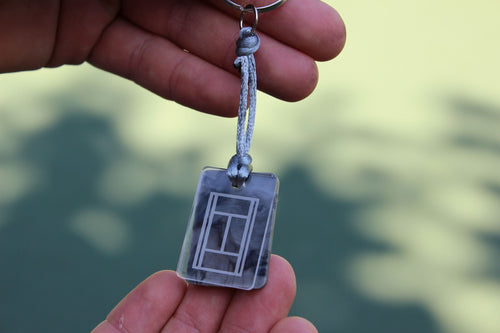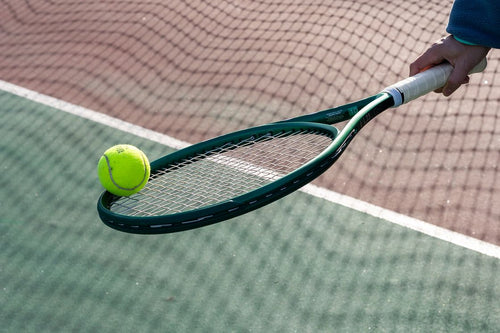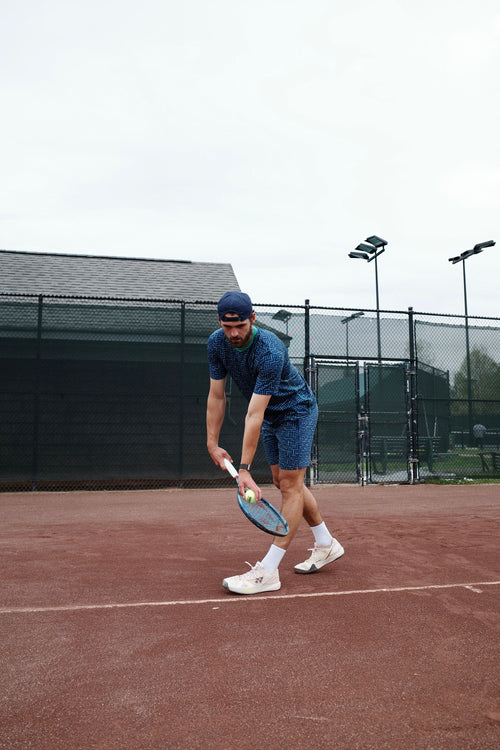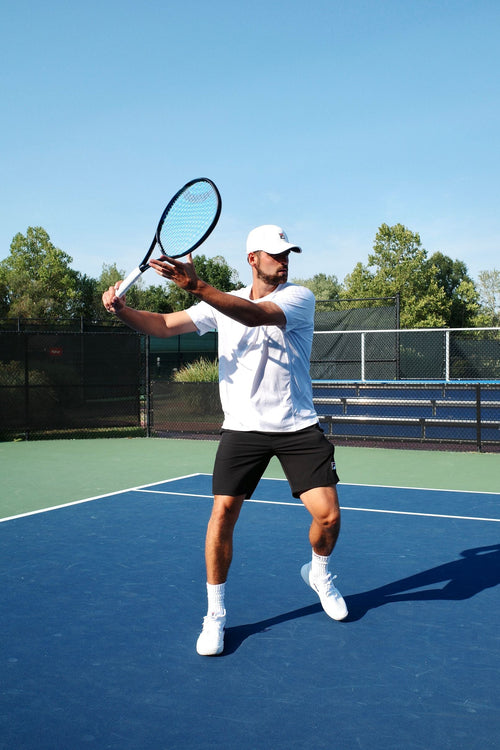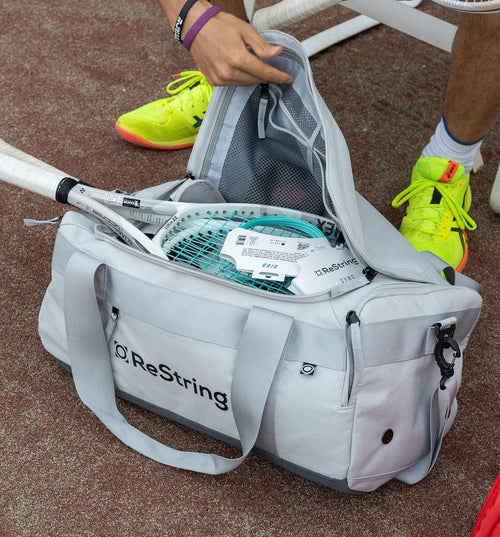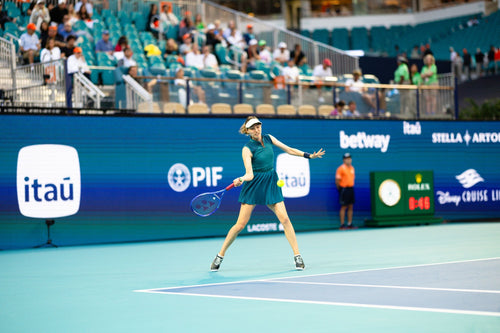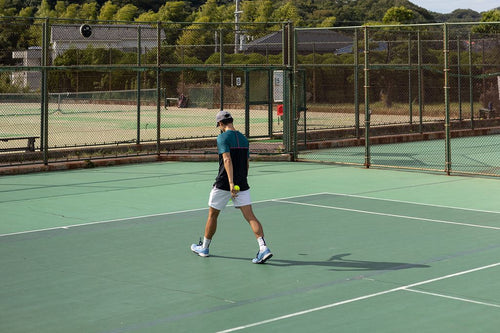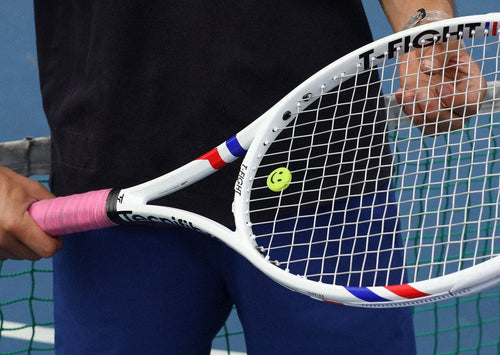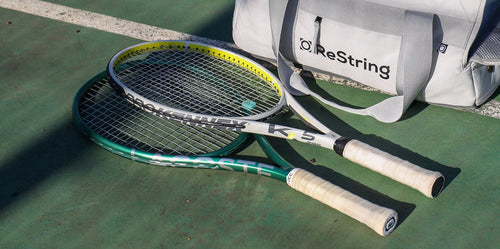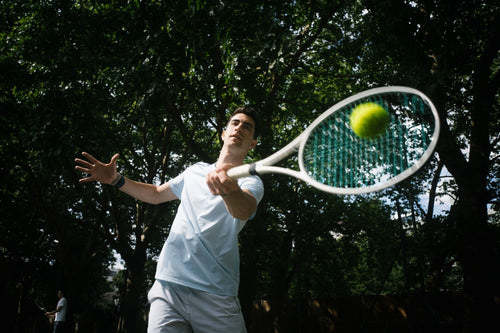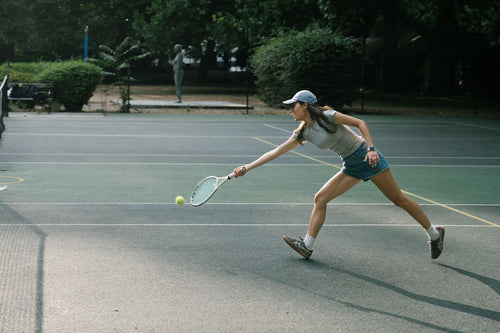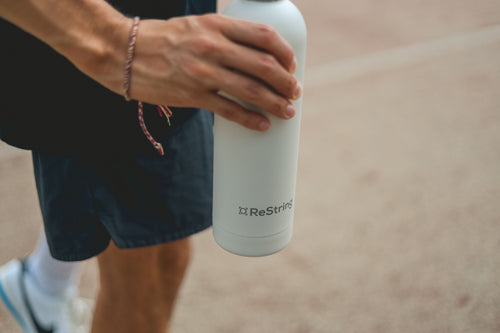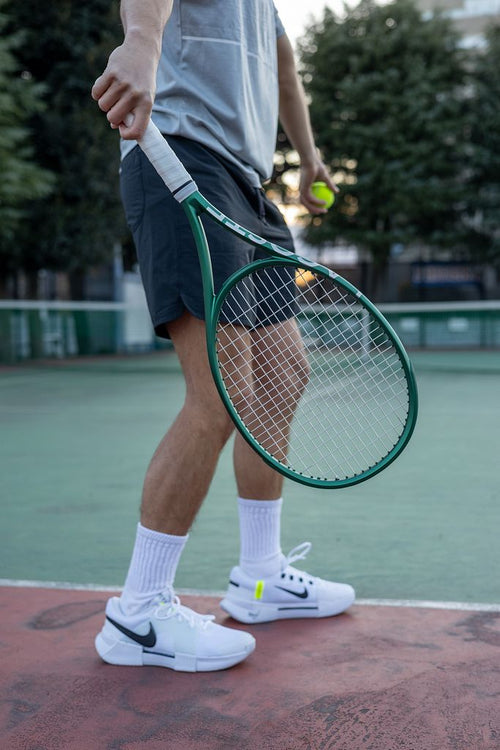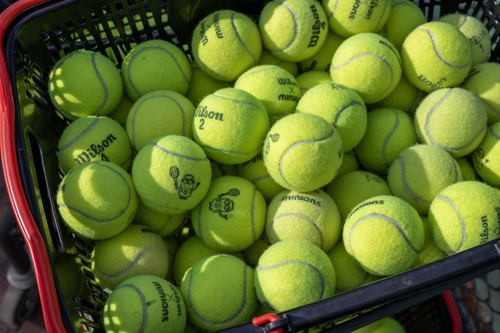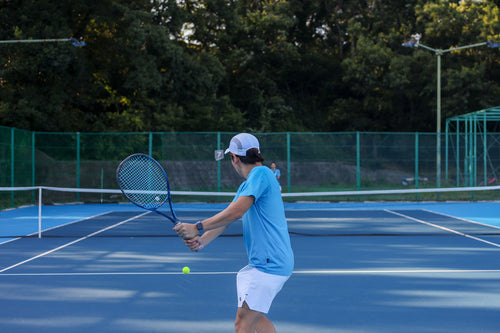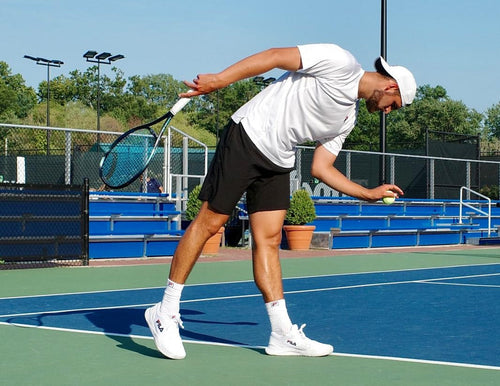Best Tennis Strings for Spin: 2 Key Things You Need To Know
Juan
Understanding Spin In Tennis
Spin is one of the most powerful weapons in tennis. When you hit the ball with spin, you brush your strings against it to create rapid rotation.
With topspin, you brush up the back of the ball, making it rotate forward. This forward rotation pushes the ball downward during flight, creating a curved trajectory that helps keep powerful shots in court. When the ball lands, this same rotation makes it kick up aggressively off the court.
With slice, you brush down the back of the ball, creating backward rotation. This backward spin makes the ball float longer in the air and skid low after bouncing, staying below your opponent's strike zone. The low bounce and reduced pace make slice an effective tool for disrupting rhythm and setting up attacking opportunities.
Professional tennis has evolved into a spin-dominated sport. Players like Rafael Nadal can generate over 3,000 RPM on their forehands - more than twice what was typical in the 1980s. This evolution has changed not just professional tennis, but how recreational players approach the game.
2 Main Factors Affecting Spin
String Bite
String bite refers to how well your strings can grip the ball at impact.
When you hit with spin, you need your strings to "bite" into the ball's felt surface to create rotation. Think of it like car tires gripping the road – better grip means better performance.
Different string designs create different levels of bite. Shaped strings, like ReString Zero's hexagonal profile, have edges that grab the ball more effectively than round strings. Other strings use textured surfaces to increase grip, though shaped strings typically provide better bite.
String gauge (thickness) also affects bite. Thinner strings can dig into the ball more easily, potentially creating more spin. However, they generally don't last as long as thicker strings. This is why many players choose a medium gauge like 17G for a good balance of spin potential and durability. Both Zero and Sync are available in this gauge.
String Snapback
The second crucial factor in generating spin is string snapback.
When you hit the ball, your strings stretch and move. As the ball leaves your racket, these displaced strings quickly snap back to their original position. This snapback motion adds extra rotation to the ball, increasing overall spin.
The quality of snapback depends largely on string movement. Strings need to slide smoothly against each other to move freely. This is where string material and coating become important. Both Zero and Sync are engineered to have a best-in-class low-friction coefficient that allows strings to move with minimal resistance, maximizing snapback potential.
Your string tension and racket's string pattern also affect snapback. Lower tensions generally allow more string movement, while open string patterns (wider spacing between strings) give strings more room to move. However, there's always a balance - too much movement can reduce control and durability.
Choosing Strings for Maximum Spin
Bite-Focused Strings
If your priority is maximizing spin, shaped co-polyester strings offer the best bite on the ball. Look for strings with hexagonal profiles like ReString Zero - these geometric edges create multiple contact points with the ball's surface, leading to more grip and spin potential.
Some strings use textured surfaces to increase bite, but shaped strings provide more consistent performance. Their distinct edges maintain effectiveness longer than surface textures, which can wear down over time.
While natural gut, multifilament, and standard polyester strings all have their merits, new generation co-polyester strings provide the best bite for spin generation. When shaped into geometric profiles, these strings deliver exceptional grip and a crisp, direct response on impact.
Snapback-Optimized Strings
For optimal snapback, you need strings that can move freely and return quickly to position. Co-polyester strings, especially those engineered with low-friction coatings like Zero and Sync excel at this movement-based spin generation.
The less friction between strings, the better they can move and snap back, creating more spin potential. This smooth movement also reduces string wear, extending the life of your string bed.
Modern co-polyester strings maintain their tension better than traditional materials, ensuring consistent snapback performance over time. This combination of low friction, good tension maintenance, and durability makes them ideal for players seeking reliable spin generation.
Optimizing Your String Setup
Finding your optimal setup starts with string tension. Lower tensions (under 53 lbs) allow more string movement, generally creating more spin potential. However, you may need to experiment to find your sweet spot between spin and control.
Your racket's string pattern also matters. Open patterns (16x19) provide more space for string movement, while dense patterns (18x20) offer more control. Most spin-focused players prefer open patterns for maximum string movement.
Regular maintenance helps maintain spin performance. Check for notching or fraying, and replace strings when you notice reduced bite or snapback. High-spin players typically need fresh strings more regularly than low-spin players.
Making Your Choice
Choosing the right string comes down to your playing style and priorities. If you're an aggressive baseliner who relies on heavy topspin, a shaped co-poly like ReString Zero maximizes spin potential. Players seeking more control with moderate spin might prefer a round string like Sync.
The best string for spin is the one that matches your playing style and technique. Consider how you generate spin, your preferred tension, and your desired balance of power and control.
Start with recommended tensions and adjust based on your experience. Many players find that testing different setups in practice matches helps them discover their ideal combination of string, tension, and pattern.
Conclusion
Generating maximum spin in tennis requires both string bite and snapback. Shaped co-polyester strings provide the best bite through their geometric edges, while low-friction coatings optimize snapback performance.
Modern string technology, like ReString Zero, combines these features to help players generate more spin while maintaining control. By understanding how strings affect spin and choosing the right setup for your game, you can take your spin potential to the next level 🎾

